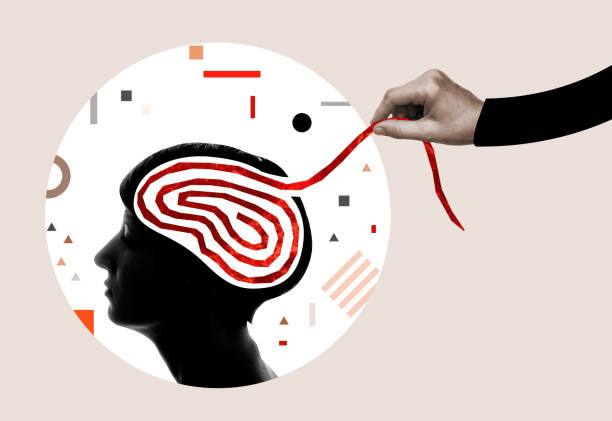Motivation and Goal Setting: The Foundation of Functional Development

Motivation and goal setting form the cornerstone of successful functional development. These elements are crucial for navigating life’s challenges, advancing professionally, and achieving personal aspirations. Yet, without a clear vision and inner drive, even the most well-crafted plans can falter. Psychology offers insights into the mechanics of motivation and how to define and achieve meaningful goals. This article explores how these principles shape functional development, empowering individuals to cultivate resilience, self-confidence, and a focused path toward their aspirations.
1. Understanding the Role of Motivation in Functional Development
Motivation is more than a simple desire to act; it’s a dynamic and complex inner force that propels us toward our goals. Functional development—growth that harmonizes physical, mental, and emotional aspects—requires a motivation aligned with individual values and aspirations. Psychology provides tools for tapping into this inner drive, helping people to:
⭕ Identify Core Values: Motivation is most sustainable when it aligns with our core values and beliefs. By understanding what truly matters, individuals are more likely to set meaningful goals.
⭕ Stay Focused on Long-Term Goals: Motivation helps bridge the gap between short-term actions and long-term visions, providing a persistent inner push through challenges and setbacks.
2. Setting Clear and Achievable Goals
Goal setting is the next essential step. When goals are well-defined, they act as a roadmap, guiding daily actions and maintaining motivation. Psychological research highlights the benefits of setting clear, specific, and achievable objectives, as they:
⭕ Provide Structure: Clear goals break down large ambitions into smaller, manageable steps, making the process less overwhelming.
⭕ Reduce Ambiguity and Increase Focus: Specific goals reduce mental fatigue by eliminating indecision, allowing individuals to channel their energy effectively.
⭕ Enhance Self-Efficacy: When people see progress in reaching smaller milestones, their confidence grows, fueling a sense of achievement and motivating further action.
3. Intrinsic vs. Extrinsic Motivation: Finding Internal Drive
Psychology differentiates between intrinsic motivation (internal motivation) and extrinsic motivation (external rewards like praise or money). While extrinsic motivation is effective for short-term goals, intrinsic motivation is more sustainable for long-term functional development. To foster intrinsic motivation:
⭕ Align Goals with Personal Interests: Choosing activities and challenges that are inherently enjoyable or meaningful creates a lasting commitment.
⭕ Foster Curiosity and Lifelong Learning: When people are genuinely curious, they seek improvement naturally, without needing external prompts.
4. Developing Persistence and Self-Confidence
Goal achievement requires resilience and confidence, especially when facing obstacles. Psychology offers techniques to build these attributes:
⭕ Self-Affirmation: Positive affirmations and self-compassion reinforce an individual’s worth and abilities, encouraging persistence.
⭕ Growth Mindset: Embracing the belief that abilities can be developed through effort and learning shifts focus from fixed abilities to potential growth.
⭕ Success Visualization: Imagining the process and outcome of achieving goals, often called mental rehearsal, prepares the mind for success. Visualization can also help individuals anticipate and plan for potential obstacles, boosting self-confidence and preparation.
5. Overcoming Inner Barriers and Self-Doubt
Inner barriers, like fear of failure and self-doubt, often inhibit motivation. Psychological approaches, such as cognitive restructuring and positive thinking, address these issues by:
⭕ Reframing Negative Thoughts: By recognizing and challenging self-limiting beliefs, individuals transform doubts into constructive, motivating thoughts.
⭕ Self-Compassion: Treating oneself kindly during setbacks or failures reduces the impact of self-criticism and allows for constructive reflection.
6. Techniques for Long-Term Motivation
Long-term motivation requires consistent effort, which can wane over time. Psychology offers strategies to sustain motivation through the stages of functional development:
⭕ Reward Systems: Celebrating small victories creates positive reinforcement, encouraging progress toward the final goal.
⭕ Habit Formation: Building daily habits, like journaling or setting aside reflection time, embeds goal-oriented behaviors into routine life, making them automatic and reducing the need for conscious effort.
⭕ Accountability: Sharing goals with a trusted person or joining a supportive group provides external encouragement, making it easier to maintain momentum.
7. Visualization and Positive Thinking
Visualization and positive thinking have proven to be powerful tools in maintaining motivation and overcoming inner barriers. Visualization involves imagining the process and outcome of goal achievement in vivid detail. Studies show that regularly envisioning success:
⭕ Builds Confidence: Visualization fosters familiarity with success, reducing fear of the unknown.
⭕ Strengthens Motivation: By mentally experiencing the joy of accomplishment, individuals reinforce their desire to reach their goals.
Positive thinking, meanwhile, creates a favorable outlook on setbacks, viewing them as opportunities rather than failures. Combined, these practices allow people to stay motivated, avoid procrastination, and persist through difficulties.
Conclusion
Motivation and goal setting form the bedrock of functional human development. By utilizing psychological insights and practical techniques, individuals can identify meaningful aspirations, establish achievable steps, and maintain resilience along the journey. With a solid foundation of self-motivation, clear goals, and strategic tools like visualization, people can overcome inner obstacles, make steady progress, and build a fulfilling path to self-improvement and lasting success.







Responses